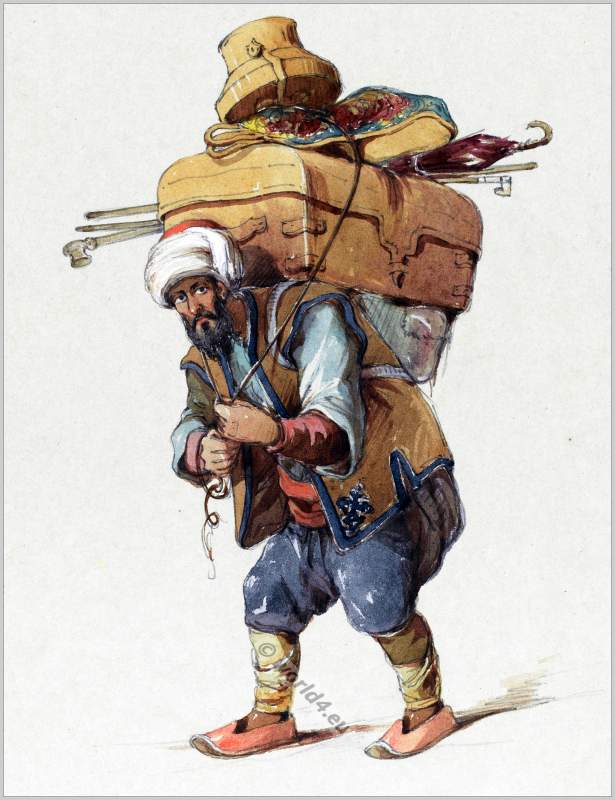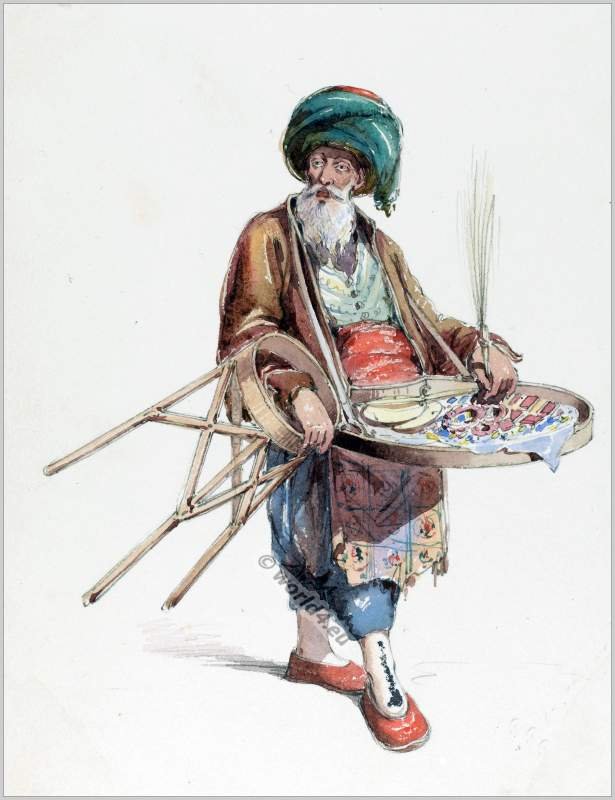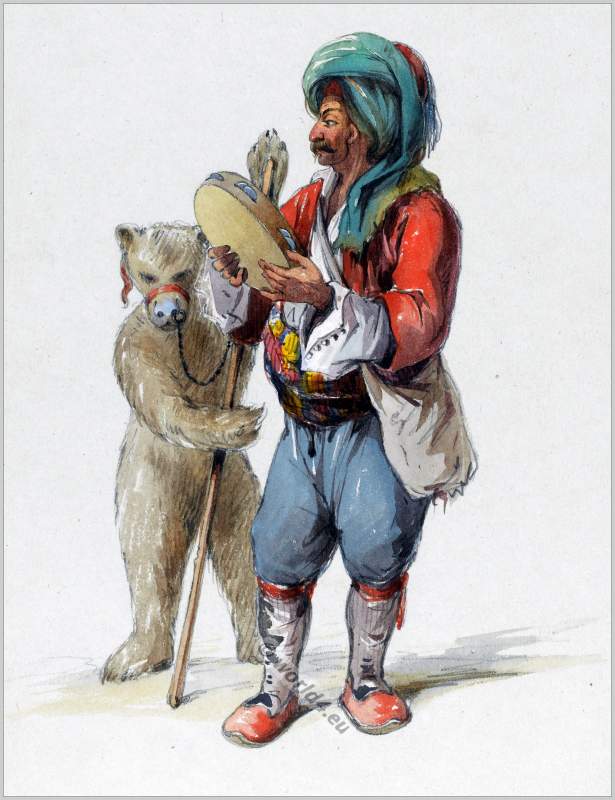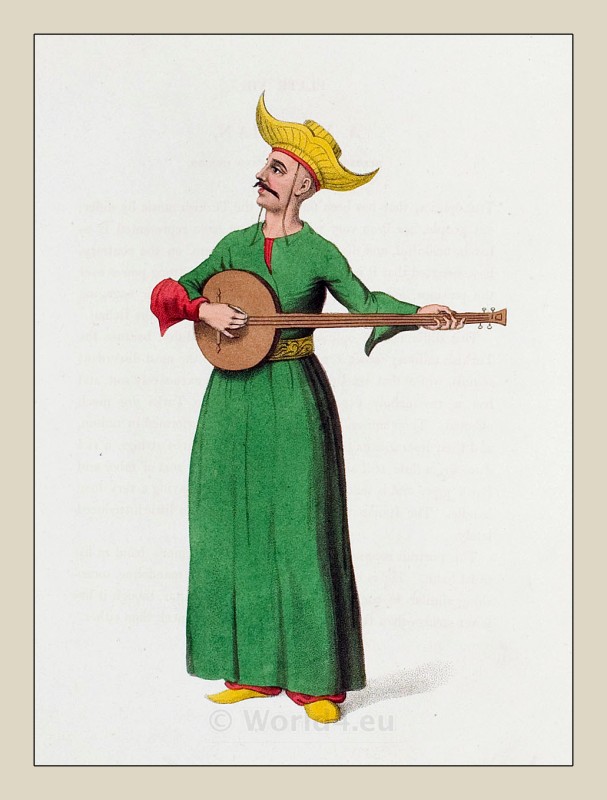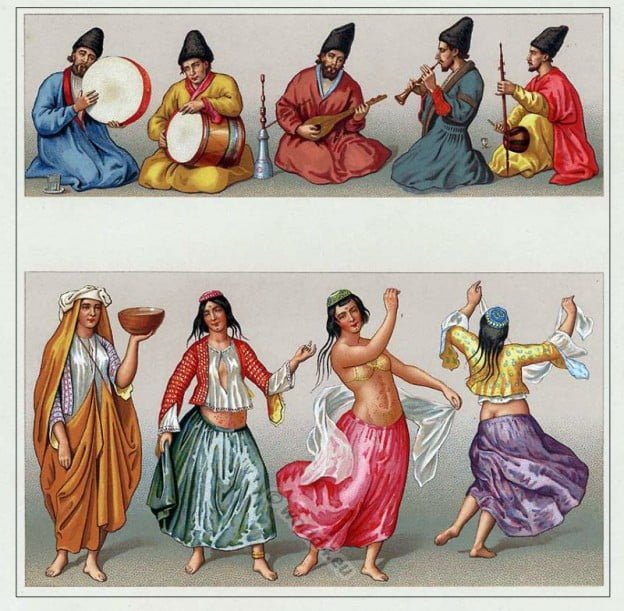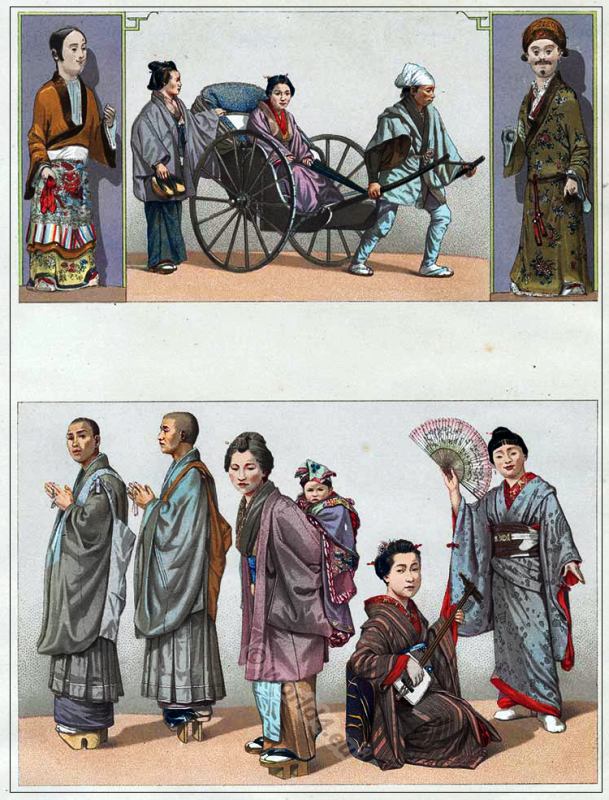Hammal, ḥammāl in Arabic, was the name given to the occupation of carrier. The Hammal had their own organization, a kind of early union.
Category: Asia
Costume and fashion history of Asia. Manners and Customs. Collected from rare sources.
Praying Mevlevi Dervish. The monks of the Order of Mevlevi .
The Sufi is the guardian of the secret teachings, the truth of Islam.
Turkish street merchant. Ottoman empire.
Street vendor in Istanbul. Stamboul, Recollections of Eastern Life by Amedeo Preziosi.
Turkish showman with dancing bear
Turkish showman with dancing bear plays the Duff. Oriental Hand drum, the Tambourine. From the book: Stamboul, Recollections of Eastern Life by Amedeo Preziosi. Published by Lemercier Paris 1861. Related gallery: The… Read More
A female bedouin of the dessert, with her child.
A female bedouin of the dessert, with her child. Ottoman Empire.
A Turkish musician at the Sultans court. Ottoman Empire.
This portrait represents one of the Grand Signior’s band in his usual habit. He is in the act of playing upon a mandolin, something similar to the modem or Spanish guitar
India. The Mughal Empire. Costume and fashion history.
The Fascination of the Indian costume and fashion history during the glorious time of the North Indian Mughal era.
The Motrebs. Persian dancer and musicians, 16th century.
In the lower part of the image three Persian dancers and a servant in the typical costumes are shown. The average dancer wearing a precursor of Raqs Sharqi belly dance costumes.
Traditional Japan costumes 19th century by Auguste Racinet.
Japan costumes of Riksha or jinrikisha man with a distinguished Japanese woman with servant.
Persia. Persepolis, Isfahan. Ruins. Tomb.
Persia. Palace of Isfahan (Meidun-e Emam). Ruins of Persepolis. Kuh-i-Rahmat. Tomb of Cyrus the Great Persia. Sultan Mosque.

